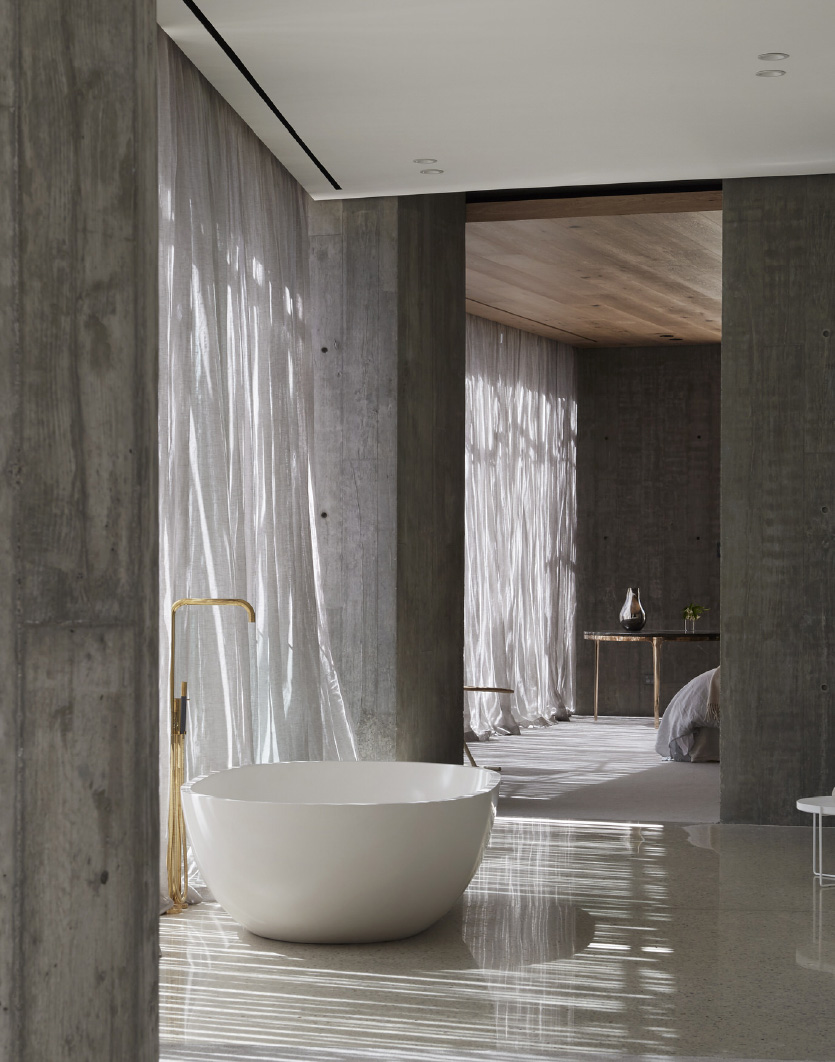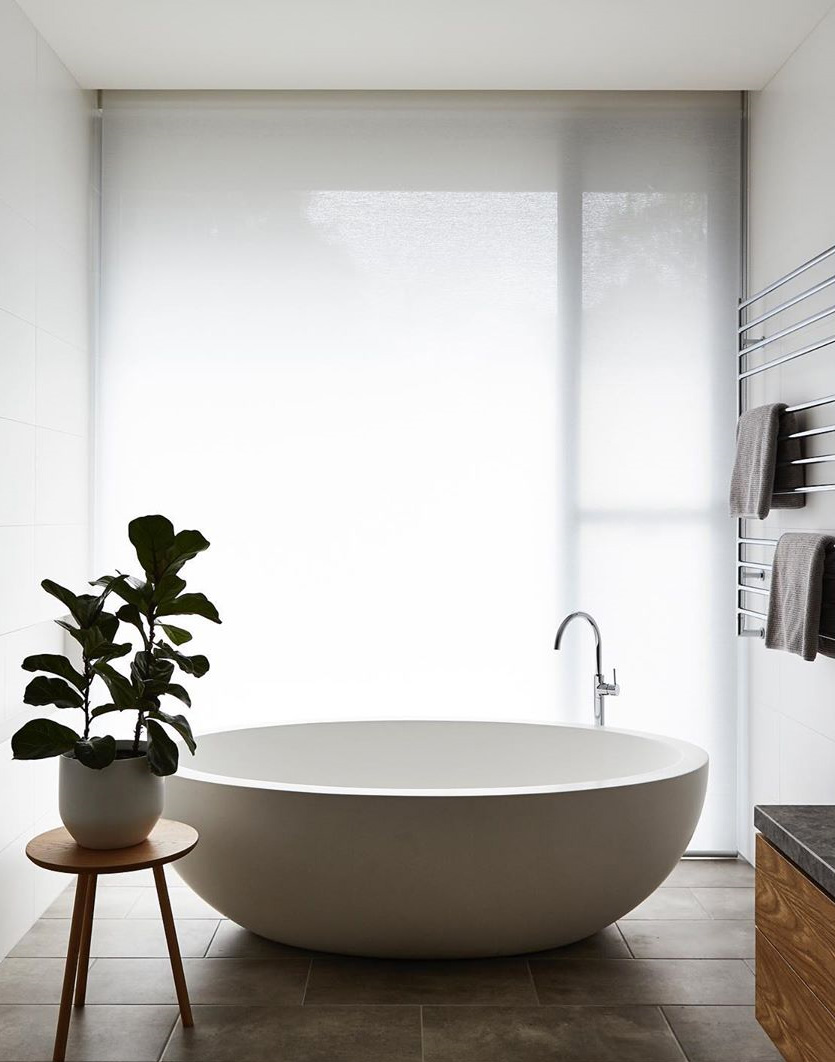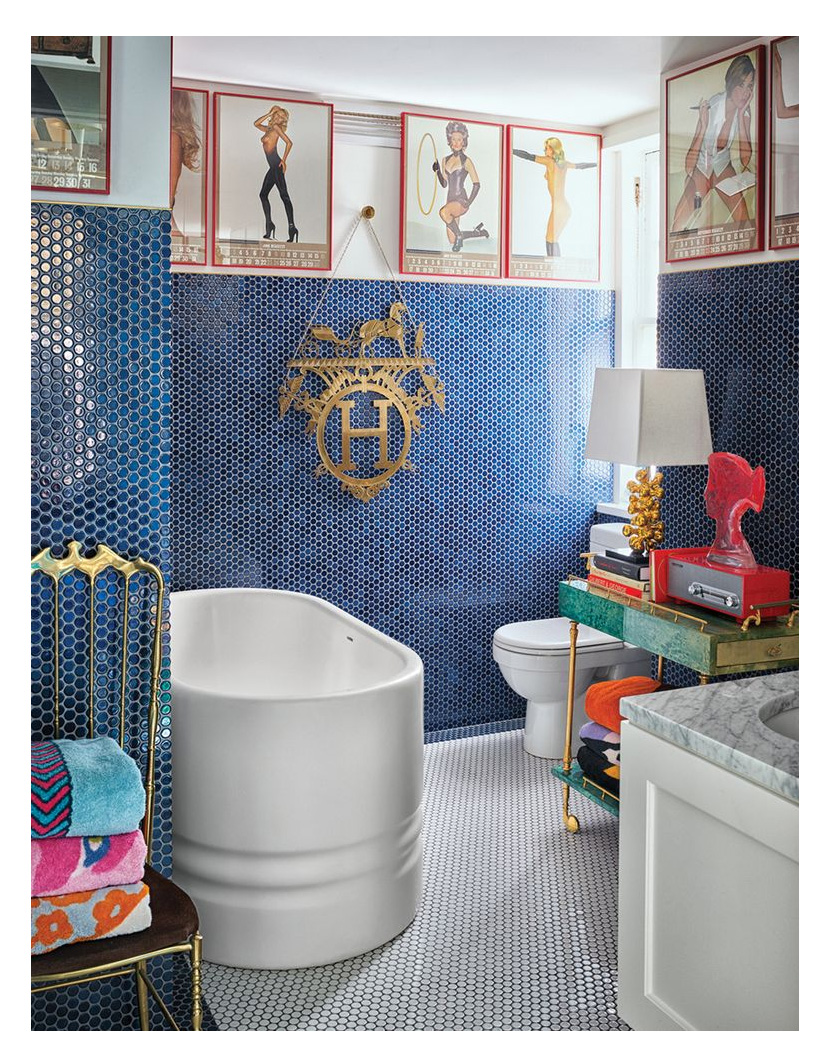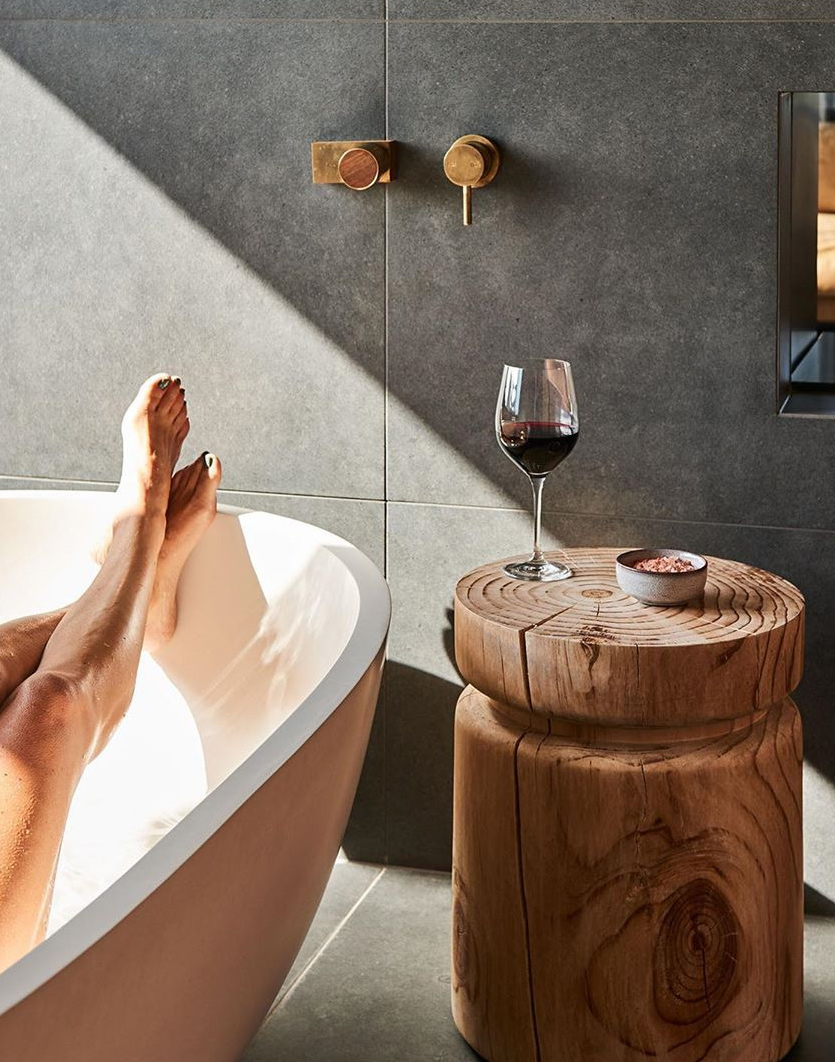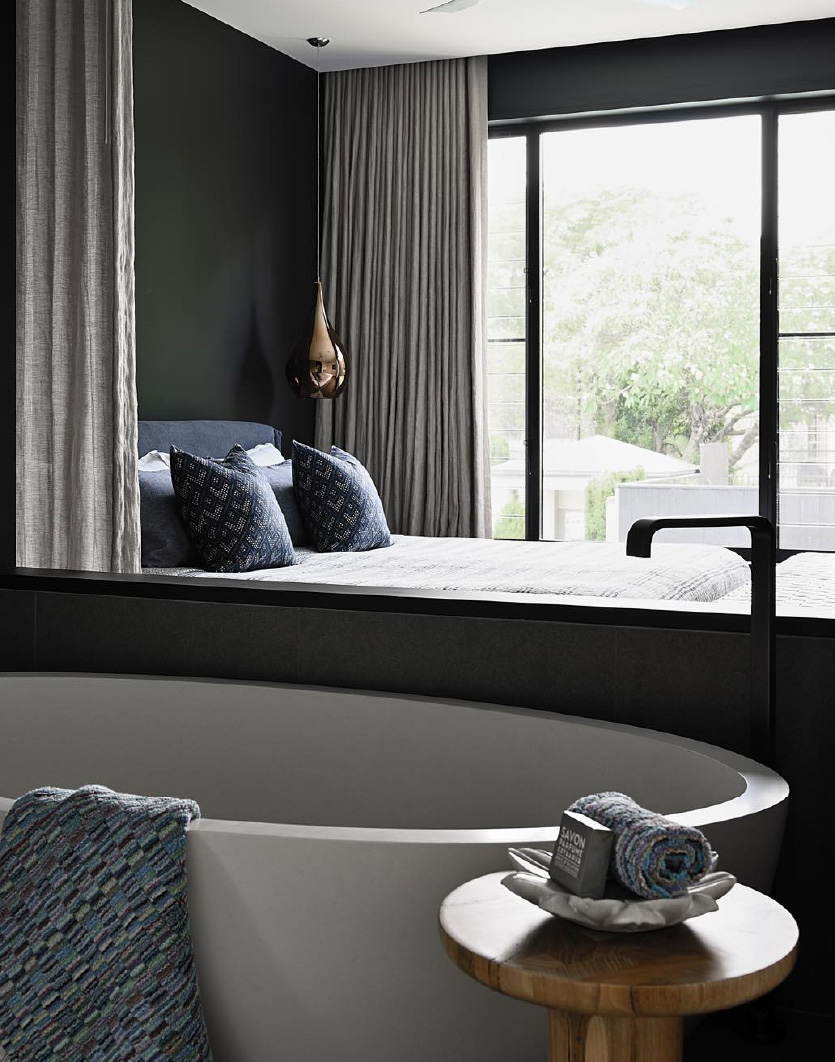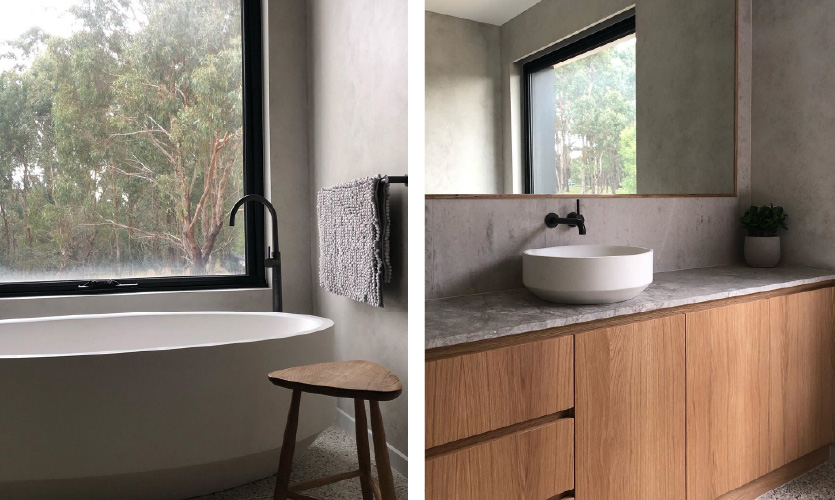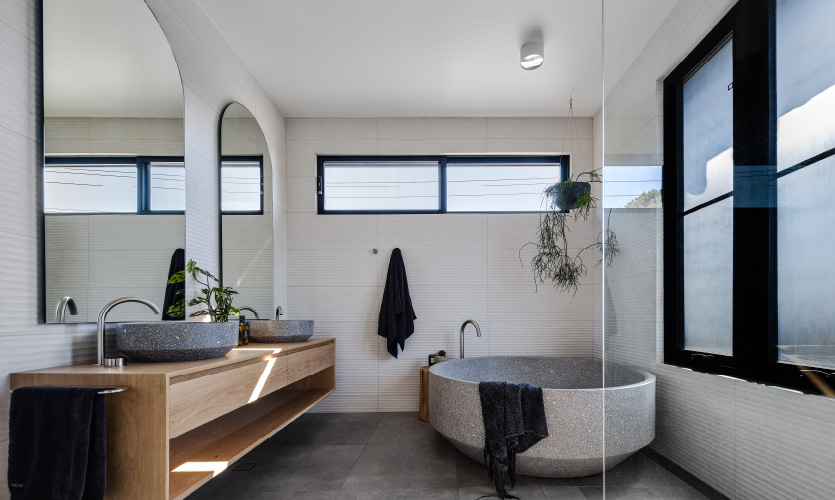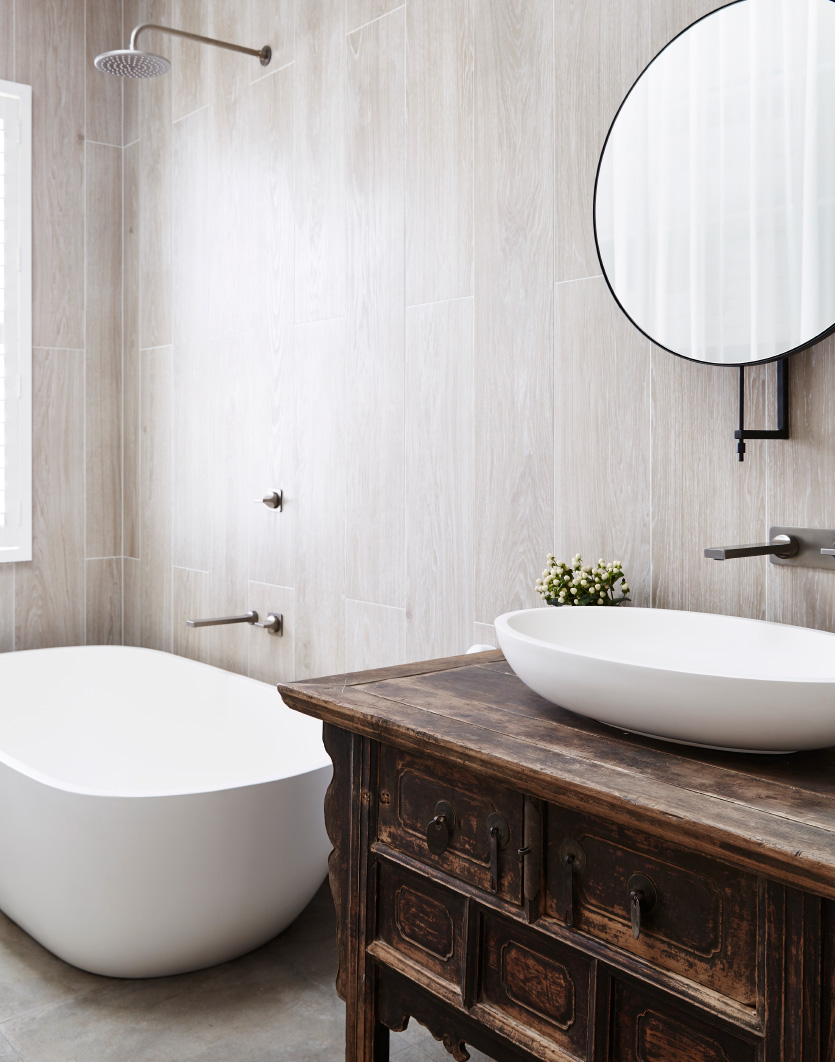
Designing your bathroom – 6 tips for choosing the perfect freestanding bath
A long relaxing soak in a generous bath is the ultimate luxury for some, and for others the bath is a sculptural piece of functional bathroom art, which defines the space. Or both. With so many styles, shapes, sizes and materials available now – how do you choose the perfect freestanding bathtub for your space?
The history of bathing is rather fascinating.
The art of bathing has been celebrated by many cultures for centuries. Roman baths and Turkish hamans were a place of relaxation, cleansing and socialisation. The Russian Banya’s were a place of bonding and healing, while Japanese Onsens were used for purification rituals and the health benefits of the mineral rich springs. In India, Ayurvedic baths are believed to cleanse the body, mind and soul and the Javanese Lulur, commonplace in Indonesian spas, was traditionally a ritual performed by prospective brides for 40 days, to prepare for their wedding.
In recent years, we have begun to really focus on our bathrooms. Embracing our own daily cleansing rituals, and creating bathroom sanctuaries as spaces in which we take care of our mind, body and soul. With so much emphasis on self-care and wellness, especially in the chaos and uncertainty of our current circumstances, the comfort of our private bathing space has never been so important.
For many of us, the key ingredient in creating a luxurious bathroom sanctuary is a beautiful freestanding bath.
A long relaxing soak in a generous bath is the ultimate luxury for some, and for others the bath is a sculptural piece of functional bathroom art, which defines the space. Or both. With so many styles, shapes, sizes and materials available now – how do you choose the perfect freestanding bathtub for your space?
Our team has put together a guide to help you navigate through the exciting world of contemporary freestanding bathware.
Material
Let’s cover the easiest deliberation first – what material do I choose?
Stone freestanding baths are a popular choice. They provide a connection to nature, often complement other finishes, look fabulous and suit a variety of different bathroom styles.
There are many different iterations of ‘stone’ in the bathware industry, so it is important to compare materials, assess the look, feel, performance and ingredients. Many contain high percentages of synthetic materials which not only look synthetic, they may also be unkind to the environment and unkind to our health. Sustainable materials and responsible manufacturing may also be a consideration for you.

Apaisermarble is one of the original, high performance, sustainable composite stone bathware materials. Find out more here: maison apaiser – apaisermarble
Concept
This is broad – but the overall feel and style of your perfect bathroom will guide the shape and colour of your freestanding bath.
Is it a clean, uncomplicated space? Look for simple shapes, thin profiles and fresh or neutral colours – black, white or concrete. Is the bath the hero of the space? A statement bath like our Serenity is stunning teamed with marble, the veining echoing the layers of the bath. If resort-like retreat with a beautiful view is more your style, very organic shapes in textured finishes and natural colours work beautifully. If you can’t decide on direction, a classic oval in a soft white, like our iconic Haven collection, is a timeless choice which complements any bathroom style.
If you have no idea where to start, we recommend flicking through some bathroom magazines (or Pinterest) and pulling tear sheets or marking pages of spaces that you love. If you do this instinctively, without too much thought or comparison, you should find that a particular style or direction emerges for you.
Purpose
Why are you choosing a freestanding bath?
Are you someone who takes a bath every day and comfort is your priority? Or, are you looking for a beautiful piece of functional bathroom art, lovely for the occasional soak but all about the design? Do you like to share your bath with someone else, in which case, generous internal space is a consideration? Is it a family bath so access, volume and safety is most important?
For comfort, look at organic shapes with perfectly angled or curved backrests. You will want a bath that fits you – too short or shallow, and you won’t be completely immersed, too long or deep and you won’t feel anchored and secure. Try our Haven, Oman and Sublime collections. For a statement piece, you can’t go past round baths, strong shapes and bold shades – Zen, Soka and Origami are perfect selections.
Although not a typical freestanding bath, the Sampan Shower Bath is one of our favourites. Both functional and provocative, it is a stylish reimagination of the space-saving, shower over bath idea. As a bath, the experience is like lying in bed, covered in water. The low profile and efficient soaking depth reduce water consumption and make it the perfect bath for children. Naturally slip-resistant, our material, combined with the low height and generous footprint – also provides a safe and pleasurable shower experience.
Space
Sometimes the best bathroom designs are a product of architectural challenges and spatial constraints. Freestanding baths come in all shapes and sizes and even if your space is compact it is still possible to have a feature tub! Consider a deeper bath if you need to compromise on length like our 1525mm Chi, or the lower profile Sublime range if you need to combine your shower and bath. An asymmetrical shape that is narrower at one end will give a little more free space if the bath needs to be installed quite close to another fixture.
If it isn’t possible to fit a bath in your bathroom, is there another room that is suitable? We love spaces that blur the boundaries between bathing, sleeping and dressing.
If you have loads of space or are designing a new home, there are still some considerations when choosing the perfect bath. Should it be positioned so that it is the focal point as soon as you enter the room? Or by a window to take advantage of a view? Is it a sculptural centrepiece in the middle of the room? Be mindful of the flow of the space and sufficient distance from other wash areas and allow enough space to easily clean around it – at least 200mm from walls and glass if you can.
It is also important to consider proportions. A low-profile bath might look odd in a room with lovely high ceilings. Bigger is not always better in terms of comfort and experience. Consider zoning very large spaces so your perfect bath does not look insignificant in a lovely, voluminous room.
If you have chosen a piece of functional bathroom art like our Bijoux, consider elevating it on a platform so you can best appreciate its beautiful, faceted surface. If you have an incredible view, why not create a bathing box set into a window – making a frame for your gorgeous tub and a cosy space for a long soak (like a window seat!).
Layout
When considering the layout of a bathroom, think about how the walls, doors and windows form natural zones which can be given a defined purpose, for washing your hands, showering or bathing. Think about the flow and potential congestion points, who uses the bathroom and the ways in which they use it. Also, the relationship between the defined areas – can these be multipurposed?
In a long, narrow bathroom a bath that spans the width of the space creates a brilliant focal point at the end, with a walk-through shower in front of the bath and vanity closest to the door, as this is the most frequently used area. Perhaps the vanity needs to run along one wall with the bath opposite, so a narrower bath is needed? Our Seascapes or Sapphire baths are a perfect choice.
Some baths like Serenity or Origami need clear margins to allow the design to be appreciated, so they will present best in large spacious environments. Others, like Soka Petit, look beautiful tucked into an alcove, or in front of a window giving the illusion of space.
Finally, think about first impressions. What is the first thing you and your guests will notice when entering the room? Perhaps it makes sense to place the bath near the door, so it can be enjoyed when doors are open?
Installation

There is one final, perhaps less exciting, consideration you should make when choosing your perfect freestanding bath. Though a little boring and practical, one should think about the installation. Access is often overlooked, especially in existing properties – always be mindful of spatial constraints and access to the building, and check if the bath can be moved through the entry points. Plumbing is the other thing to consider.
How will the bath be installed? Has the waste point already been located, or is there existing plumbing you need to work with?
Before you make your final purchase, discuss access and installation with your builder and plumber. This may determine the design and size of your bath. A really great way to overcome an existing plumbing challenge is to elevate the bath on a platform. This will hide above-floor plumbing, allow for ease of access to the connection point and creates a stage for your gorgeous piece of bathroom sculpture!
If you need help with selecting the perfect freestanding bath or advice on designing your bathroom, contact our consultants at info@apaiser.com. We are always here, ready to answer all your bathware questions.
Do you need assistance? Fill out the form below:
ENQUIRy FORM

